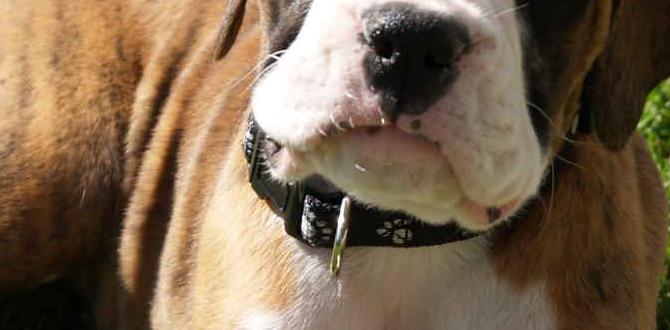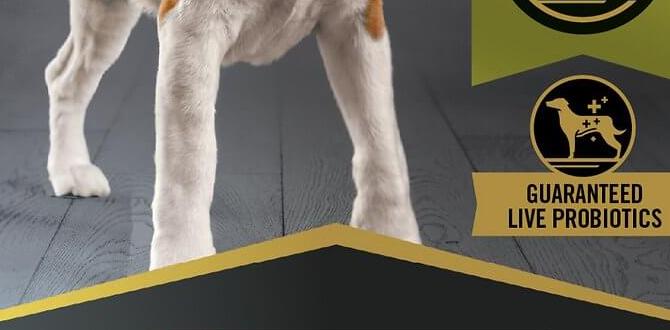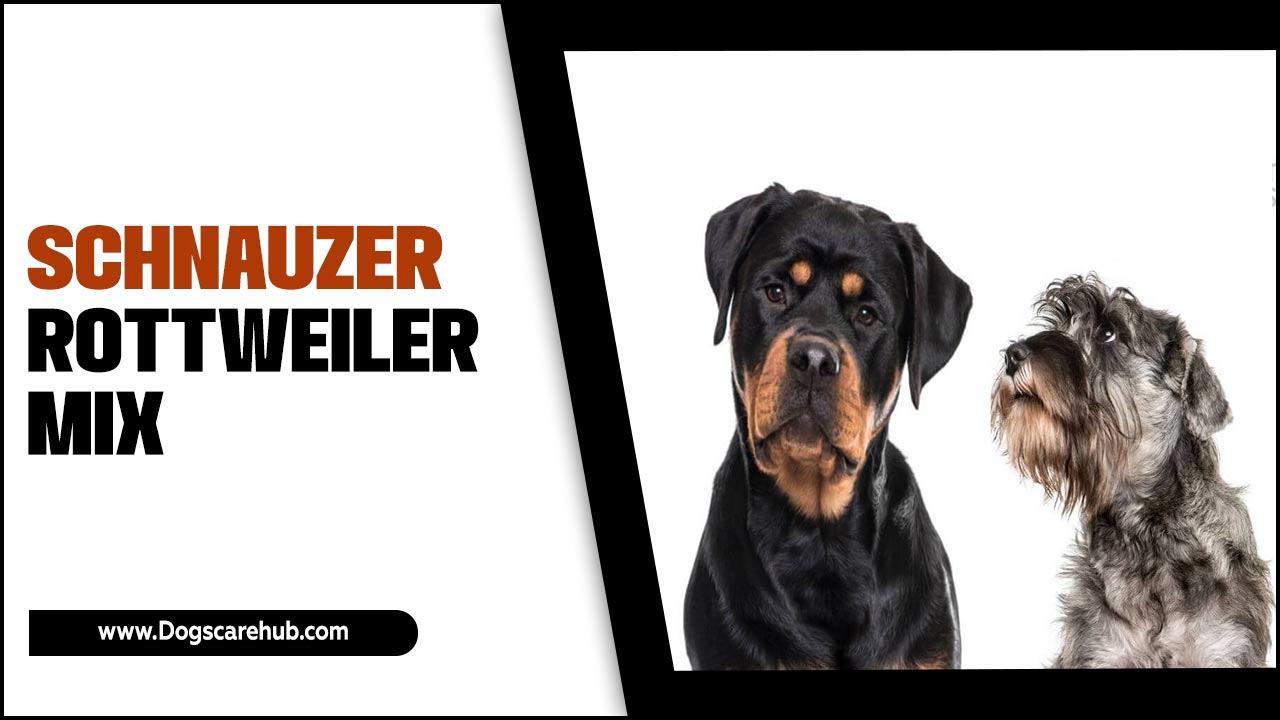Separation anxiety in dogs is treatable! With patience and a consistent approach, you can help your puppy feel secure and happy when left alone, building their confidence and reducing distress for both of you.
Seeing your furry friend distressed when you leave can tug at anyone’s heartstrings. It’s a common, and often upsetting, part of owning a puppy. This frustration can manifest in many ways, from destructive chewing to excessive barking or even accidents in the house. But don’t worry, you’re not alone, and there are effective strategies to help your pup overcome this hurdle. This guide will walk you through proven methods to ease their worries.
Understanding Separation Anxiety in Dogs: Why Your Puppy Gets Anxious When You Leave
Puppy separation anxiety is more than just a little whining when you grab your keys. It’s a genuine distress response that some dogs experience when they’re separated from their primary attachment figure, usually their owner. This isn’t about a dog being “naughty” or trying to spite you; it’s a panic attack for them. Understanding the root causes can be the first step in finding effective solutions.
Think about it from your puppy’s perspective. They’ve bonded deeply with you, their source of food, comfort, and security. Suddenly being left alone can feel like a terrifying abandonment. This anxiety often stems from a few key areas:
- Lack of Early Socialization: Puppies who weren’t exposed to various people, places, and situations as young pups might be more prone to fear and insecurity, which can contribute to separation anxiety.
- Sudden Changes: A change in routine, such as moving to a new home, a family member leaving, or even changes in your work schedule, can trigger anxiety.
- Traumatic Experiences: Previous neglect, abandonment, or scary experiences while being alone can create lasting anxieties.
- Being Rehomed: Puppies adopted from shelters or rescues, especially if they have a history of being rehomed, may have a higher risk.
- Medical Conditions: Though less common, certain medical issues can influence a dog’s behavior. It’s always worth ruling these out with your vet.
The signs of separation anxiety in dogs can vary greatly. Some puppies might pace, others might excessively bark or howl, and some could become destructive, trying to escape their confinement. Recognizing these signs is crucial for providing the right support.
Common Signs of Separation Anxiety in Puppies
It’s important to differentiate normal puppy behavior from signs of true separation anxiety. While a puppy might cry for a few minutes after you leave, true separation anxiety involves more intense and persistent distress. Here are some of the most common indicators:
- Excessive Vocalization: Persistent barking, howling, or whining that continues long after you’ve left or when you’re about to leave.
- Destructive Behavior: Chewing furniture, doors, windowsills, or other objects, often directed at exit points. This isn’t malicious; it’s an attempt to escape or relieve stress.
- House Soiling: Urinating or defecating inside, even if the puppy is reliably housetrained. This often happens shortly after you leave and is due to stress, not a lack of training.
- Pacing: Restlessly walking back and forth, often along a specific path, especially near doors or windows.
- Excessive Drooling or Panting: These can be signs of stress and anxiety, even in a cool environment.
- Escape Attempts: Trying desperately to get out of a crate, room, or even the house, which can lead to injuries.
- Depression or Lethargy: Some dogs may become withdrawn, refuse to eat, or appear unusually sad when left alone.
- Following You Constantly: While many dogs like to be close to their owners, a dog with separation anxiety will often exhibit clingy behavior even when you’re home, and especially when they sense you’re about to leave.
It’s also worth noting that some of these behaviors can overlap with other issues, such as boredom or a lack of housetraining. Observing your dog’s behavior when you are not present is key, often requiring the use of a pet camera. If you suspect separation anxiety, consult with your veterinarian or a certified professional dog trainer.
Step-by-Step Guide to Relieving Puppy Separation Anxiety
Tackling separation anxiety requires a thoughtful, patient, and consistent approach. The goal is to change your puppy’s perception of being alone, helping them see it as a positive or at least a neutral experience, rather than a terrifying ordeal. Here’s a breakdown of effective strategies:
1. Create a Safe and Comy Den
Your puppy’s crate should be a sanctuary, not a prison. It should be a place where they feel safe and relaxed. When used correctly, a crate provides a secure den that can help reduce anxiety.
- Size Matters: Ensure the crate is large enough for your puppy to stand up, turn around, and lie down comfortably, but not so large that they can use one end as a toilet area.
- Positive Association: Make the crate a happy place. Feed meals inside the crate, toss high-value treats inside, and leave them with safe, engaging toys. Never use the crate for punishment.
- Gradual Introduction: Start by leaving the door open and letting your puppy explore it. Gradually encourage them to go inside for short periods with treats.
- Comfort Items: Place a soft, familiar bedding and a piece of clothing that smells like you inside the crate.
Your goal is for your puppy to choose to go into the crate and relax there. This may take days or even weeks of practice.
2. Desensitize to Departure Cues
Dogs are masters of routine and can become anxious simply by picking up on the pre-departure signals you give. Things like picking up keys, putting on shoes, or grabbing a bag can trigger their anxiety before you even leave the house.
- Practice Random Actions: Pick up your keys and then sit back down. Put on your shoes and then watch TV. Do these things at random times throughout the day without actually leaving.
- Vary Your Routine: Don’t always leave through the same door or at the same time.
- Calm Departures: Avoid overly emotional goodbyes. Lavish attention on your puppy just before you leave can reinforce their belief that something significant is happening and that your departure is a big deal.
By making these actions normal and unremarkable, you can reduce the anxiety they trigger.
3. Practice Gradual Departures
This is perhaps the most crucial step and requires immense patience. You’ll gradually increase the amount of time your puppy is left alone, starting with very short durations.
- Start Small: Leave for just a few seconds, then return before your puppy shows signs of distress.
- Increase Duration Slowly: Once your puppy is comfortable with short absences, slowly increase the time. Go from 5 seconds to 10 seconds, then 30 seconds, a minute, and so on.
- Never Push Too Far: If your puppy starts to show anxiety (panting, whining, looking for you), you’ve gone too far. Reduce the duration back to a time they were comfortable with and try again later.
- Return Calmly: When you return, greet your puppy calmly. Avoid overwhelming them with excitement, as this can heighten their anticipation of your return.
This process can take weeks or months, depending on the severity of the anxiety. The key is to always end on a positive note, where your puppy feels calm and secure.
4. Provide Enriching Mental and Physical Stimulation
A tired and mentally stimulated puppy is a happier and more relaxed puppy. Ensure your puppy is getting enough exercise and has outlets for their natural behaviors.
- Physical Exercise: Regular walks, play sessions, and opportunities to run are essential. A good ‘out’ can help them settle better.
- Mental Stimulation: Puzzle toys, treat-dispensing toys, scent games, and training sessions can work your puppy’s brain and tire them out effectively.
- Chewing: Provide plenty of appropriate chew toys to satisfy their natural urge to chew, especially if they are prone to destructive chewing when anxious.
A well-exercised puppy is less likely to have pent-up energy that could contribute to anxiety when left alone.
5. Use Positive Reinforcement and Counter-Conditioning
Counter-conditioning involves changing your puppy’s emotional response to being alone from negative (fear/anxiety) to positive (anticipation of good things).
- Special Treats: Reserve high-value, long-lasting treats or special toys (like a Kong filled with peanut butter or frozen yogurt) ONLY for when you leave.
- Associate Absence with Rewards: Give these special items to your puppy just before you leave. This helps them associate your departure with something very enjoyable and distracting.
- Calm Reintegration: When you return, wait until your puppy has calmed down before giving them attention or a treat. This reinforces that calm behavior is rewarded, not anxious behavior.
The American Veterinary Society of Animal Behavior (AVSAB) advocates for positive reinforcement and force-free methods for addressing behavioral issues like separation anxiety. These methods build trust and are highly effective.
6. Consider Calming Aids and Professional Help
For some puppies, especially those with severe anxiety, additional support might be beneficial.
- Calming Music or White Noise: Playing classical music or white noise can have a soothing effect on some dogs.
- Pheromones: Adaptil diffusers or collars release synthetic pheromones that mimic those emitted by a mother dog nursing her puppies, which can create a sense of calm.
- Supplements: Certain over-the-counter calming supplements containing ingredients like L-theanine or tryptophan may help, but always discuss these with your veterinarian first.
- Veterinary Consultation: In severe cases, your veterinarian might discuss prescription medication to help manage the anxiety, used in conjunction with behavioral modification.
- Professional Trainer or Behaviorist: A certified professional dog trainer (CPDT-KA/SA) or a veterinary behaviorist can provide personalized guidance and develop a tailored behavior modification plan. You can find certified professionals through organizations like the Certification Council for Professional Dog Trainers (CCPDT) or the American College of Veterinary Behaviorists (ACVB).
Remember, these are complements to, not replacements for, behavioral modification techniques.
Separation Anxiety vs. Other Issues: What’s the Difference?
It’s important to correctly diagnose separation anxiety, as other issues can mimic its symptoms. Misdiagnosis can lead to ineffective treatments and further frustration.
Here’s a quick comparison:
| Symptom | Separation Anxiety | Boredom | Incomplete Housetraining |
|---|---|---|---|
| Destruction | Often near exit points (doors, windows); desperate escape attempts. | Can be anywhere; may involve chewing indiscriminate items. | Less common, but might happen if confinement becomes too long. |
| Vocalization | Howling, barking, whining specifically when owner is absent or about to leave. | Barking at stimuli from outside; occasional “play” barking. | Rarely the primary symptom. |
| House Soiling | Urinates/defecates specifically when owner is absent; often shortly after departure. | Can occur if not given enough potty breaks; less tied to owner’s presence. | Accidents occur when the dog has the urge and no opportunity to go outside. |
| Owner’s Presence | Often follows owner, clingy; restless as departure approaches. | May be more independent, but seeks attention or play when owner IS present. | Generally not an issue when owner is present, if trained well. |
| Reaction to “Alone Time” | Becomes highly distressed when owner leaves and during absence. | May become restless or destructive due to lack of stimulation. | No specific distress related to owner’s absence; just a lack of training on potty habits. |
If your puppy is exhibiting destructive behavior, excessive barking, or house soiling, and you suspect separation anxiety, try to monitor their behavior using a pet camera. This can provide invaluable insight into when and how these behaviors occur, helping you and your vet or trainer pinpoint the cause and create the most effective plan.
Frequently Asked Questions About Puppy Separation Anxiety
Q1: How long does it take to cure separation anxiety in puppies?
A1: There’s no set timeline, as every puppy is different. It can take anywhere from a few weeks to several months of consistent training, patience, and positive reinforcement. The key is progress, not perfection, and celebrating small victories along the way. Never rush the process.
Q2: Can my puppy grow out of separation anxiety?
A2: Some mild cases might improve as a puppy matures and gains confidence, but true separation anxiety usually requires active intervention. It’s not something most dogs simply “grow out” of without help. Early intervention is always best.
Q3: What are the biggest mistakes owners make when dealing with separation anxiety?
A3: Common mistakes include punishing the puppy for anxious behaviors (which makes anxiety worse), leaving them alone for too long too soon, making departures or arrivals overly dramatic, and not providing enough mental/physical stimulation. Inconsistency is also a major setback.
Q4: Is it okay to give my puppy a treat when I leave?
A4: Yes, this is a core part of counter-conditioning! Offering a high-value, long-lasting chew toy or stuffed Kong just as you leave can create a positive association with your departure. It’s a distraction and reward rolled into one. Just make sure it’s something safe and engaging that they only get when you’re gone.
Q5: Should I get another dog to help with my puppy’s separation anxiety?
A5: While a second dog can sometimes ease loneliness, it’s generally not a solution for separation anxiety. The anxiety is tied to a specific person (you), not just the state of being alone. A new dog might even get stressed by the anxious resident dog, or vice-versa, creating more problems.
Q6: My puppy destroys things when I leave. Should I get them a crate?
A6: A crate can be a wonderful tool for managing destructive behavior if introduced positively and used correctly as a safe den. However, if a puppy is panicking and trying desperately to escape a crate, it can worsen their anxiety and lead to injury. It’s crucial to ensure the crate is a place of comfort and safety, and never a means of punishment. If your puppy shows extreme panic in a crate, consult a professional.
Conclusion
Separation anxiety in dogs, especially puppies, can be a challenging issue, but it’s by no means impossible to overcome. By understanding the underlying causes, recognizing the signs, and implementing a consistent, patient, and positive approach, you can help your furry companion build confidence and feel secure even when you’re not around. Remember to focus on creating a safe environment, gradually desensitizing them to your departures, providing ample stimulation, and using counter-conditioning to change their emotional response.
Your dedication to learning and applying these methods will foster a stronger bond with your puppy and pave the way for a happier, more peaceful home for both of you. If at any point you feel overwhelmed or your puppy’s anxiety is severe, don’t hesitate to reach out to your veterinarian or a certified professional dog trainer. You’ve got this, and your puppy will thank you for it with every wag of their tail!
Meet Elyse Colburn, the devoted canine companion and storyteller behind the enchanting world of “Tales, Tails, and Adventures Unleashed.” A passionate dog enthusiast with a heart full of paw prints, Elyse Colburn shares heartwarming tales and insightful adventures, celebrating the joy, loyalty, and endless antics that make every dog a true hero. Join Elyse Colburn on this tail-wagging journey, where every post is a love letter to our four-legged friends.







